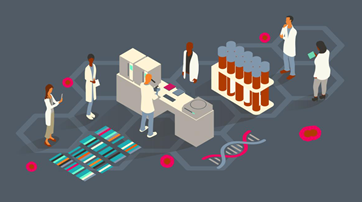

Context
- A new study published in the journal Nature describes a pangenome reference map created utilising genomes from 47 anonymous individuals (19 men and 28 women), mostly from Africa but also from the Caribbean, Americas, East Asia, and Europe.
Key Highlights:
What is a genome?
- The genome is the blueprint of life, a collection of all the genes and regions between the genes contained in our 23 pairs of chromosomes.
- Each chromosome is a contiguous stretch of DNA string composed of millions of individual building blocks called nucleotides or bases.
- Genome sequencing is the method used to determine the precise order of the four letters and how they are arranged in chromosomes.
- Sequencing individual genomes helps us understand human diversity at the genetic level and how prone we are to certain diseases.
- To circumvent this, one can have a collective identity card, such as a single genome identity card for everyone living in a region.
What is a reference genome?
- The making of the first reference genome in 2001 was a scientific breakthrough, helping scientists discover thousands of genes linked to various diseases and design novel diagnostic tests.
- However, the reference genome was 92% complete and contained many gaps and errors.
- Since then, the reference genome map has been refined and improved to have complete end-to-end sequences of all 23 human chromosomes.
- However, the finished reference genome map does not represent all of human diversity.
- This new study published in Nature changes this, describing the making of the pangenome map, the genetic diversity among the 47 individuals, and the computational methods developed to build the map and represent differences in those genomes.
What is a pangenome map?
- The pangenome is a graph of each chromosome, with nodes where sequences of all 47 individuals converge and internodes representing genetic variations.
- To create complete and contiguous chromosome maps, researchers used long-read DNA sequencing technologies, which produce strings of contiguous DNA strands of tens of thousands of nucleotides long.
- This helps assemble the sequences with minimum errors and read through repetitive regions of the chromosomes.
Why is a pangenome map important?
- The human genome consists of 3.2 billion individual nucleotides, with a 0.4% difference between any two individuals.
- A complete and error-free pangenome map will help us understand these differences and explain human diversity better.
- It has added nearly 119 million new letters and aided the discovery of 150 new genes linked to autism.
- Future pangenome maps that include high quality genomes from Indians will shed light on disease prevalence, help discover new genes for rare diseases, design better diagnostic methods, and help discover novel drugs.


